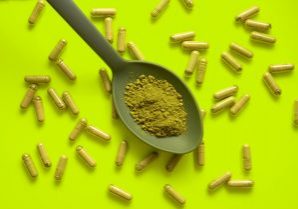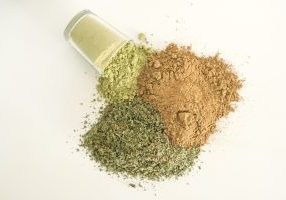Have you ever taken the time to read the product label on the last batch of kratom that you bought? Do you know what type of information you should see on that type of label? Or are you completely unsure about what it says on the package other than the company and product name?
If you’ve ever taken the time to look at a kratom label, the chances are pretty high that you haven’t found much information there. Due to a lack of regulation in the industry, there isn’t a lot of incentive for companies to include a lot of information.
Here at Phytoextractum, we find that to be incredibly frustrating. What is a consumer supposed to do if they can’t get any information from the label? Are people expected to know everything about a product before they buy it?
Let’s take a look at the complicated world of kratom product labels and what we hope to see happen in the future.
Creating a Brand
The first reason that we’re used to seeing labels on products is to let you know who made it. Brands are eager to put their names and logos on everything that they put into the world because they know that indirect marketing like this can bring them more business in the long run.
Consumers who have used their products before are more likely to recognize their name and logo if they saw it on the packaging, and that recognition can lead them to buy again. That’s why companies put so much time and money into choosing the right imagery, colors, and words for their logos.
Branding is incredibly important in all industries, and the kratom industry is no exception.

Generalized Label Expectations
At this time, not all states require specific information to be included on kratom labels. We believe that this doesn’t mean that general label expectations should not be followed. In fact, we think that the lack of regulation makes it even more important.
Usage
The first thing that needs to be included is some type of instructions about how to use the product. Any relevant information and suggestions from the manufacturer to the consumer can be included here so that the customer sees it.
Warnings
Other things that you can (and should) see on a label are warnings. If there are any cautions, warnings, or other precautionary information that would benefit the consumer to know, it is a company’s obligation to warn the customer about these things.
Many products have warnings that are regulated and must be put on every product, such as cigarettes. For unregulated products such as kratom, however, no such requirements exist.
Stats
Another important thing to include on the label is any specific information about what is in the product. Ingredients, nutritional information, serving size, and more are all examples of stats that you might find on a product label.
As kratom is not under FDA regulation, product labels should not include any type of nutritional information unless otherwise advised by a regulatory agency.
The Complicated Kratom Label Situation
If you know anything about kratom’s legal status, you know that the status is always at risk. While some states have legalized kratom and made moves to protect consumers from unregulated dangers, not every state is as open to the idea of legal kratom.
Because of this, there are no official regulations that kratom vendors need to follow when they sell their products. There are some things that vendors are not allowed to say per FDA rules, but that doesn’t mean they have to say other things instead.
Vendors can put whatever they want on the labels, and we don’t believe that is enough. Though official classification of kratom at levels is still underway, it is possible to label kratom properly.
AKA’s GMP Label Program
For own labeling purposes, we follow the labeling protocol that is outlined within the American Kratom Association’s GMP Standards Program. The AKA is working tirelessly to help protect kratom consumers in America, and we believe that this is a program fully worth supporting.
With the standards laid out through AKA’s research, we (and other kratom vendors) can be sure to protect our consumers to the best of our abilities.

AKA’s Label Requirements
To be part of the GMP program with AKA, you have to follow their guidelines. Many of the guidelines have to do with labels, as you can see in the program guidelines:
- • The labels, labeling, or advertising of any kratom product should not bear any disease claims (i.e., claims regarding the treatment, cure, prevention, or mitigation of disease) or unauthorized health claims.
- • The labels, labeling, or advertising of any kratom product should not bear any structure/function claims.
- • The labels, labeling, or advertising of any kratom product should not reference any research or clinical data.
- • Each finished product label must include a batch or lot number.
- • Each finished product should be labeled to disclose the mitragynine and 7-OH alkaloid content of the product.
- • Each finished product label must advise consumers to consult with a physician for dosing information relative to alkaloid values.
- • No kratom products may be sold to individuals under the age of 18.
- • The label should bear a statement that pregnant women should not use kratom products during pregnancy.
- • All labels, labeling, or advertising should include the following statement: “This product is not intended to diagnose, treat, cure, or prevent any disease or condition.”
As you can see, those labeling requirements can be quite complicated, but that’s not a problem because AKA resources to help clarify things for vendors and consumers alike. The requirements don’t exist just to be complicated. They exist to ensure that vendors and consumers both are protected from the risks and dangers of the industry.
When you’re buying kratom online or in stores, take the time to look at the label on each product. Does the label give you good information? Do you feel like you have a good idea of the product by the time you read through it? If you answered yes to those questions, you should feel confident that you’re making a good choice.











